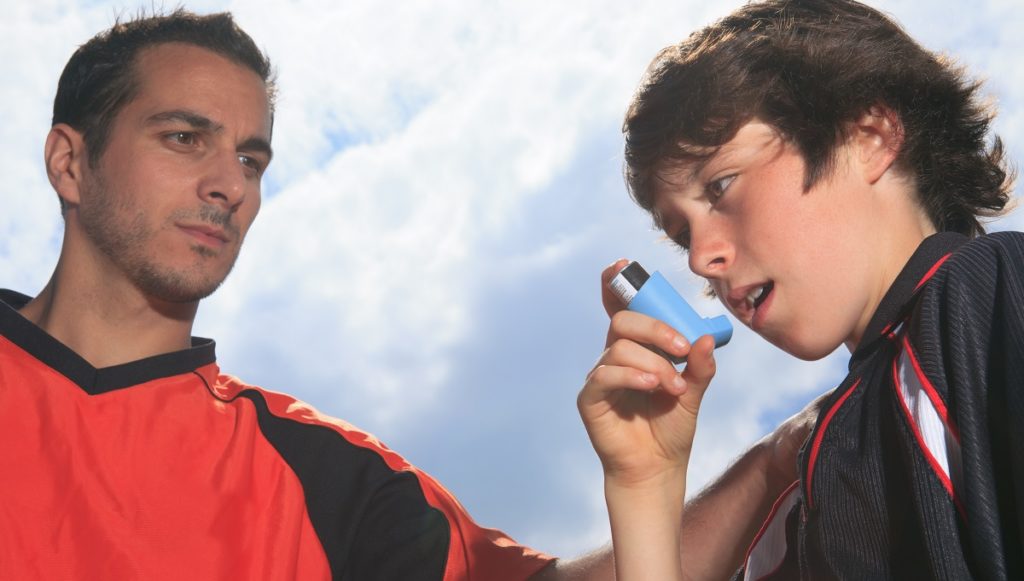Exercise-induced asthma can wreak havoc on the lungs of young athletes. Learn how to manage symptoms on and off the field.
Does intense physical activity leave your teen wheezing and gasping for air?
Exercise-induced asthma, also known as exercise-induced bronchoconstriction, affects the majority of people with asthma and 10 percent of otherwise healthy individuals. It can result in asthmatic symptoms, including coughing, shortness of breath, tightness in the chest and wheezing.
Frequently, exercise-induced asthma is caused by inhaling cold or dry air. During vigorous exercise, people tend to breathe quickly through their mouths. As a result, air bypasses the nose’s warm, humid environment. When cold, dry air enters the lungs, the airways narrow, and airflow gets restricted.
In addition to cold, dry air, other factors that can exacerbate symptoms include:
- Allergies and allergy triggers, such as pollen
- Being out of shape
- Exposure to irritants, such as fumes, smoke and strong odors
- Poor air quality
- Having recently had an asthma attack or respiratory illness
Preventing Asthma Attacks During Exercise
For teenagers involved in competitive sports, exercise-induced asthma may be scary and can affect athletic performance on the field. Endurance sports and sports that expose athletes to asthma triggers, such as cold or dry air, can be particularly problematic. However, you can help limit symptoms with the following tips:
- Cover up. While exercising in cold or dry weather, encourage kids to cover their mouths and noses with a scarf or bandana.
- Pay attention. Make sure they take a break and use any quick-relief or short-acting medication, such as a rescue inhaler, as soon as symptoms arise.
- Stay active. Do not discourage physical activity. Staying in shape can actually help reduce symptoms of exercise-induced asthma.
- Take any necessary medication before games and practices. Your child’s healthcare provider may prescribe a short-acting medication, which should be taken 10 to 15 minutes before exercise and in the event of a flare-up. A long-acting medication may be advised if symptoms occur on a regular basis.
- Warm up. A gradual warm-up before vigorous exercise helps the body adjust and reduces symptoms.
Sources: aafa.org, kidshealth.org, kidshealth.org, aaaai.org, aaaai.org, ncbi.nlm.nih.gov, asthma.org, apa.org, lung.org, cdc.gov, cdc.gov, aafa.org, acaai.org
